![]()
1 Introduction
2 Before Council Housing
3 Homes for Heroes
4 Inter-war Slum Clearance
5 Meeting the Post-war Housing Shortage
6 A New Urban Vision
7 Pushing the Boundaries and Housing All
8 The Impact of the ‘Right to Buy’
9 The Future of Council Housing
| Historically council housing is public housing that is
rented to
households who are unable to afford to rent from the private sector or buy their
own home. It has been called council housing due to the role of district and
borough councils managing the housing. More recently Registered Social
Landlords (RSLs), including semi-independent and not-for-profit housing associations,
have played a larger role in providing and managing housing, consequently
council and RSL housing is collectively known as ‘social housing’. The underlying principle of council house provision is that historically the private sector was deemed unable to provide adequate housing for all and state intervention was required to ensure there was good quality affordable housing for low income households. The growth of council housing in this country has been largely determined by central government policies and legislation. Throughout the twentieth century there has been a shifting emphasis between two main objectives - the need to build more houses in the face of shortages, especially in the post war periods, and the need to replace old designated slum areas of cities. Each objective has received priority from Government at different times over the years and their policies have influenced the amount of new building and the type and quality of construction. |
|
|
| There is a variety of construction types seen in council housing
through the years, among them are garden estates built on greenfield
sites under early legalisation, innovative PRC construction at a time of
labour and material shortage in post war Britain and the development of
high density blocks of flats built in inner city slum clearance areas
which echo of modernist aspirations.
The following pages will guide you through the main chronological events of the twentieth century from before council housing to the early days of providing good quality homes for soldiers returning from the First World War, through slum clearance programmes and the handling of the crisis of the post Second World War housing shortage, to more current times of maintaining an aging stock and implementing regeneration strategies. |
|
|
Britain’s cities began to expand on a large scale during the nineteenth century largely due to workers and labourers from the surrounding countryside flocking to the city seeking work during the years of industrialisation and growing opportunity for employment. House building at this time was largely done by profit-seeking private builders. Mostly they built long streets of terraced houses and these new communities were largely unplanned. The large majority of the population rented privately, from a modest room in a house to a grand residence in the country. Mainly due to the fact that borrowing and mortgages had not become commonplace, only the richest people could afford to own their own homes. |
 |
| Problems of poor housing conditions, mostly in inner city areas, grew steadily as city populations increased. With the development of high density unorganised neighbourhoods, overcrowding became commonplace. In the poorer areas of cities families could be found huddled in dark and unsanitary courts of squalid housing often without facilities and natural light. Some of the worst conditions were found in London, Glasgow, Liverpool and Newcastle. Concerns began to grow across the country about public health arguably this was stimulated by a fear among the middle classes of infectious disease spreading from the overcrowded and insanitary working class housing into where they lived. There was pressure on the Government to begin looking at housing issues and they were slowly persuaded to intervene. It was argued that new private housing was too expensive for most working class families and of these houses, most were built in the suburbs which were too expensive and distant from their sites of employment. |
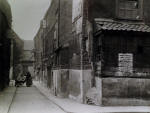 |
|
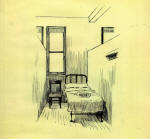 |
Government begun to pass various Acts mainly aimed to address the worst areas of housing unfit for habitation or to improve or demolish existing houses. The most important Act came in 1890: the ‘Housing for the Working Classes Act’. Efforts was made to build and regulate private Common Lodging Houses that catered for those in the most need, like the one purpose built in Bristol illustrated on the right. They provided accommodation mostly for single men in little dormitories as seen left. Other private Lodging Houses like the 'Britts Central Home for Men Only' (below) opened up providing basic beds for some of the poorest people in society and were mostly run by charitable trusts or voluntary organisations. There was also a movement for improved housing from some independent organisations such as the Bristol Industrial Dwellings Company who pioneered for housing the poorer people in Bristol and succeeded in erecting three blocks of flats containing 80 tenements in the area of Jacob’s Wells. |
 |
 |
Up until 1919, although councils did have the power to build houses, most had had little involvement. Some corporation family housing was provided, mainly in London, Liverpool and Glasgow, often to rehouse those displaced as the result of street improvement schemes. London’s local councils had began to build houses in the 1890s, one of its earliest schemes was the inner city Millbank Estate in Westminster completed in 1902. The estate provided affordable rented flats for 4,430 people on a site that had previously been the notorious Millbank prison. However in almost all areas, efforts to clear slum areas exceeded all house construction, effectively reducing the number of low cost housing available. Most pre-1919 corporation housing was built cheaply taking the form of high density tenement blocks of flats with small rooms and limited facilities including shared kitchen and toilets and no running hot water. Typical rents where high which was no comfort to those on low and irregular wages and thus did not provide housing for the very poor. One reason for high rents was that before 1919 no corporation dwellings received subsidy from central government. It wasn’t until after the First World War that housing became a real priority. |
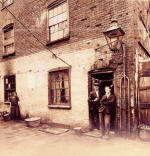 |
 |
In the years before the First World War private builders had supplied virtually all new housing in towns and cities. The war, however, changed everything. Building activity came to a virtual standstill whilst the country fought. By the time of the General Election in 1918 it was becoming clear that the country faced an acute shortage of housing. Building costs were inflated and this, combined with a scarcity of materials and labour, made it impossible for the private developers to provide houses with rents within reach of the average working class family. The close of the war also brought a new social attitude that focused the Government’s attention on a national responsibility to provide homes, giving rise to Lloyd George's famous promise of 'homes fit for heroes' referring to the many soldiers returning from the war. |
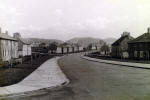 |
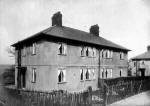 |
The Housing and Town Planning Act of 1919 (The Addison Act) was seen as a watershed in the provision of corporation (council) housing. Councils were thrust to the forefront as the providers and they began to plan their post-war housing programmes. Housing Committees were set up, working largely from recommendations from central government's advisory committee - the Tudor Walters Committee and encouraged to build through the provision of generous subsidies. The subsidy arrangements shared the costs of this new housing between the tenants, local rate payers and the Treasury. Councils in areas of high housing need could apply for these subsidies. The London County Council (the predecessor to the Greater London Council) also raised money through selling London housing bonds which promised investors a 6% return and raised £4 million during the 1920s. |
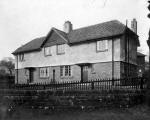 |
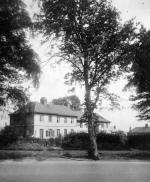 |
Planners promoted the construction of new suburban ‘garden’ estates, situated on the outskirts of cities. Mainly consisting of three bed houses for families, the design of the estates aimed to create self-contained communities of low density - often with no more than 12 houses per acre. Facilities, including churches, schools and shops, were provided; public houses were initially excluded from the plans. On most estates, house were provided with a generous size garden to encourage the tenants to grow their own vegetables, a privet hedge at the front and an apple tree at the back. The interiors varied, some having a parlour, but all had a scullery and bath. For most new tenants these new conditions were a huge improvement on their previous slum housing where they had experienced overcrowding and often were without even basic facilities. The quality of the housing was generally high. Although some slum clearance took place during the 1920s much of the emphasis of this period was to provide new general needs housing on greenfield sites. |
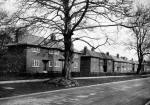 |
 |
||
 |
The most ambitious estate built to reward soldiers and their families after the war was the massive Becontree estate in Dagenham which was to become the largest council housing estate in the world. Work by the London County Council on the estate started in 1921, farms were compulsory purchased and by 1932 over 25,000 houses had been built and over 100,000 people had moved to the area. The new houses had gas and electricity, inside toilets, fitted baths and front and back gardens. LCC also, however, had strict rules for new tenants on housework, house and garden maintenance, children’s behaviour and the keeping of pets. The estate expanded over the Essex parishes of Barking, Dagenham and Ilford with nearly 27,000 homes in total creating a virtual new town with dwellings for over 30,000 families. |
 |
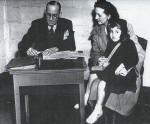 |
Most of these new council estates, like Becontree, provided good quality housing for the better
off working classes but did not provide a solution for the poorer people in
society. Rents were high and subletting was forbidden so naturally the tenants
in the best position to pay were selected. High rents sometimes meant difficulty
in paying, as more applicants from unskilled occupations were housed. The Addison Act was passed initially as a temporary measure to meet the housing need felt in the country as an effect of the war and at a time when private builders could not meet the demand. It was generally assumed that the private sector would resume responsibility for working class housing once the British economy had recovered. |
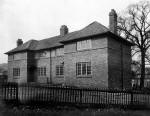 |
 |
The high building standards initially embraced in 1919 were gradually reduced during the 1920s and 1930s, as cost considerations became paramount space and amenities were reduced. The principle objective of the Wheatley Act of 1924 was to secure a continuous building programme for period of 15 years and to erect houses that could be let at lower rents to meet the position of lower wage earners. This put pressures to reduce the size and standard of houses and called for new council estates to be developed at a higher density. For instance, during this period, a new three bedroom house was often only 620 square feet compared to over 1000 square feet in 1919. New council housing was gradually becoming residualised and labelled for the very poor, despite this they generally continued to provide good quality accommodation. |  |
 |
After this initial burst of building activity across the country targeted at reducing the post-war housing shortage, local councils began to tackle the problem of its existing slum housing. The Housing Act of 1930 encouraged mass slum clearance and councils set to work to demolish poor quality housing and replace with new build. The photo on the left shows a designated Slum Officer at work to prioritise the demolition. Slum areas of housing existed in most inner city areas and were generally old, neglected and unhealthy places to live. Many of the houses had originally built for workers during the period of rapid industrial development often without thought for overcrowding or amenities such as an adequate water supply, ventilation and sunlight. Using powers available under the Act to acquire and demolish privately owned properties, slum clearance schemes were put into action across the country. |
 |
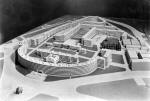 |
By 1933 all authorities were required to concentrate efforts on slum clearance; each had to submit a programme of building and demolition aimed at eliminating slums from their districts. The city of Bristol had calculated they had 25,000 people living in houses unfit for human habitation and proposed the replacement of 5,000 unfit dwellings. Unlike the garden estates built directly after the First World War, much of the slum clearance was replaced with flats, mostly three to five storeys high. They were often modelled on schemes in continental Europe such as the Quarry Hill flats in Leeds (shown left) which were inspired by a tour the Karl Marx building - workers flats in Vienna. Non-traditional building techniques were embraced - the photo to the right shows the steel framework for two of the units that would comprise Quarry Hill which was at this time the largest council house project in Europe. |  |
 |
 |
|
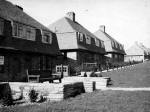 |
Local councils tried initially to rehouse people locally back into the communities they
were forced to vacate following the demolition of inner city slum areas. However
central redevelopment was only ever confined to relatively small schemes
at this time and the vast
majority of new houses were built on new estates, most located on the fringes of
the cities. This was a combination of central policy and the high cost of inner
city land. The new tenants had to weigh up the disadvantage of a considerably
longer journey to work and sense of isolation against the benefits of a new well
equipped home.
Rents were generally lower in this period than they were for earlier schemes built under the 1919 Housing Act. Despite this and a general commitment to house those in most need, in practice the ability to pay the rent played a crucial factor in allocation. Rents were set much lower following the 1930 Housing Act in line with re-housing some of the poorest people in society under slum clearance policy. |
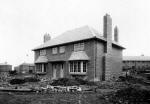 |
 |
Tenancy conditions were strict and regulations were enforced from the start. Some tenants were put off by the oppressive housing management. In Liverpool women housing managers were employed to inspect properties and instruct tenants on good housekeeping. Below is an extract from a letter to new tenant from the Corporation of Bristol Housing Estates on 15th June 1936 making an offer of a new house on the Knowle West estate. |
 |
|
|
“The Housing Committee realise that you have been living under very undesirable conditions, and that in worn out houses it is very difficult to get rid of vermin. But there will be no excuse in your new house. Do not buy secondhand furniture, bedding or pictures unless you are quite sure that the articles are free from vermin. Insects do not like soap and hot water, and they also dislike dusters and polish. So if in the new house you keep your windows open, and keep your bodies and clothing, floors and stairs, furniture and bedding clean; use the duster frequently on all skirting and ledges, you are not likely to be troubled again with vermin. This sounds a lot, but life isn’t going to be all work for the housewife. The new house will be easy to keep clean and it will be well worth looking after...” |
|
 |
The outbreak of the Second World War effectively put a stop to house building for a second time. As the war drew to a close, Britain faced its worst housing shortage of the twentieth century. Thousands of houses across the country had been lost by heavy bombing and many more were badly damaged. It was estimated that 750,000 new homes were required in England and Wales in 1945 to provide all families with accommodation. Plans were drawn up for a major building programme, drawing on the themes established prior to 1939. The election of 1945 saw a Labour government voted in and housing policy was central to their welfare reforms in their manifesto. Aneurin Bevan, the Minister of Health, was responsible for the housing programme which focused heavily on local authority involvement rather than reliance of the private sector. Added pressure on the Government came in the form of soldiers returning from war and rising working class expectations as a result of Labour's promises. |
 |
 |
Part of the initial response was programme of short term repairs to existing properties and the rapid construction of ‘prefabs’ – factory built single storey temporary bungalows. These were highly controversial at the time but the Prime Minister of the time, Winston Churchill, was strongly in favour and initiated the Temporary Prefabricated Housing programme. Churchill originally wanted half a million prefabs built across the country as a stopgap measure until labour could be mobilised for more permanent housing. They were expected to last for only 10 years but they proved very popular with some residents. There are still many lived in across the country with 330 in use today in the city of Bristol - one of the largest concentrations of prefabs left in the country. Over the years most prefabs have been demolished and replaced with permanent housing. |
 |
 |
The first prefabs were completed June 1945 only weeks after the war had ended. Factories that had previously been employed to build other products such as Aeroplanes were converted to build sections of the innovative new houses. It took a minimum of 40 man-hours to assemble the two bedroom houses complete with plumbing and heating. Sometimes prisoners of war who were still being held in the country were used to help in the construction of the concrete slabs on which the sections of bungalow were erected. The prefabs could be completed very quickly once the sections were delivered to the site. Unlike traditional houses they had fully fitted kitchens and bathrooms. | 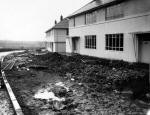 |
 |
Despite the construction of 156,622 prefabs the country still faced an acute housing shortage and waiting lists soared in urban areas. All over the country local authorities took the lead in building homes for growing families. House building battled on despite a shortage of materials and the worst winter in living memory in 1947. New estates were emerging and established ones expanded, at the peak of production in Bristol in 1955, 43 families per week were being moved into brand new homes. Demand was so high that national league tables were devised showing the numbers of council homes built across the country, enormous pressure was put on Housing Departments to produce. |
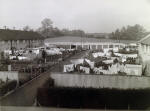 |
 |
To meet the shortage and bring the cost of housing down, a new form of construction was pioneered, commonly called ‘PRC’ (Pre-cast Reinforced Concrete). These houses were quick to assemble and required less skilled labour than traditional build. They were proprietary brands developed and marketed by different builders. Largely made from concrete panels reinforced with steel then bolted together or constructed with a steel frame. They included various kinds such as Airey (left), Cornish, Wates, Unity (below left), Reema, Tarran, Woolaway (below right) and Parkinson types. The city of Leeds lead the way with the highest number of PRCs built. They were like the prefabs in that they were built by non-traditional methods from components made in a factory but unlike the prefabs they were permanent and were expected to last for at least 60 years. |
 |
|
|
The construction of these new quick build houses seemed like part of the solution to the housing crisis at the time, however as we will see they were later to cause major problems for tenants and councils across the country. In the decade after 1945, 1.5 million homes had been completed and some of the demand for housing had been alleviated. The percentage of the people renting from local authorities had risen to over a quarter of the population, from 10% in 1938 to 26% in 1961. |
|
 |
The country was still faced with large areas of slum housing with many houses described as unfit to live in and many more people living in sub-standard conditions. Many of these houses had been due for demolition under slum clearance plans devised before the war under the 1930 Housing Act and had been neglected since. Inner city populations were growing rapidly and the shortage of good quality housing combined with inner city vacant and derelict sites left by the bombs created an opportunity for modernisers to promote a new urban vision. Architects and planners favoured a modernist approach and the 'streets in the sky' were devised. This was against a backdrop of political change, a new Conservative government was elected in in 1951 and after initially pledging to increase council house production in line with manifesto targets, sizes and standards were reduced and a greater emphasis of house building was given back to the private sector. |  |
 |
Councils could act under slum clearance powers to compulsory purchase inner urban land and housing for redevelopment, most of the existing housing was old and lacked any modern amenities however there were some communities saved from redevelopment following protests from local residents who fought and saved their neighbourhoods from ‘slum’ status and demolition. Following in the themes of modernist ideas, many local councils built pre-fabricated blocks of flats. Derelict inner city sites were cleared of any remaining old streets and houses and pioneering new schemes were planned. |
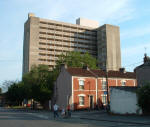 |
|
The individual developments often included the coherent construction of blocks of various sizes with a 'hub' that provided heating and hot water services. Communal facilities such as a laundry, creche, doctor's surgery, children play areas and stores for bikes and prams were often intended to be part of the scheme. Many of the schemes were controversial in their day, on the one hand people were allocated modern flats with the all the modern facilities, however they often paid the price of the break up of their established communities. |
|
 |
However, the concept of council high rise flats was criticised in later years for creating poor quality badly built housing and high-density estates and many of the new estates had become hard to let and hard to live in by the 1970s. In reality many of the flats were built at low cost on run-down inner city areas or alternatively on remote low cost surburban sites, some quickly gaining a poor reputation. One example is the Netherley Estate in Liverpool. Begun in late 1960s, the estate was built to house people moving from the south dock area - the Dingle. From the start the estate was poorly located with no local employment and difficult and poor transport to the city centre. upon completion in the early 1970s, the five storey concrete slab blocks of flats were plagued with construction problems and rapidly required expensive maintenance. The estate developed a bad reputation with a high concentration of problem tenants. Within ten years of completion, the council began to move people out and rehouse them elsewhere. Netherley Estate has since been demolished at massive cost. |
 |
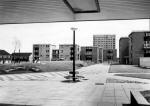 |
The increased development of high rise blocks of flats during the 1950s and 60s can be directly attributed to a response to the Government's subsidy system. From 1956, subsidy was confined to new houses built to replace those lost to slum clearance and there was more money available for blocks of more than six storeys high. Helped by this subsidy, neighbourhoods all over the country were being demolished and rebuilt according to modern town planning concepts of mixed estates with low and high-rise building. Council house building redoubled in London and by the 1960s over 500,000 new flats had been added to London’s stock. Many of the new dwellings were in the form of multi-storey tower blocks which seems the ideal solution to the housing problem at the time. |
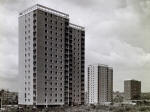 |
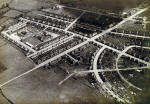 |
Another feature of the post-war expansion of council housing during the 1950s and 1960s was the development of more new peripheral estates on or close to the edge of the cities. By this time most inner city potential building sites had been exhausted and faced with growing waiting lists of people needing housing councils turned to the peripheries. Sometimes city boundaries were expanded to embrace these new estates. Peripheral expansion was partly about rehousing people from the congested inner city areas where redevelopment was taking place, and partly about responding to the sheer growth in demand for housing during the ‘baby boom’ period up until the 1970’s. |
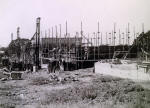 |
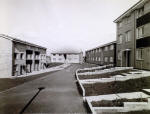 |
A common difficulty for new residents on these surburb estates was the distance from the city centre and often inadequate bus service. People were often moved in before roads and pavements were finished. Many had to contend with thick mud and a feeling of isolation in their new community. Schools, shops and other facilities on the new estates were slow to follow but at least the councils were prepared to discuss the inclusion of public houses in their plans by now! The majority new homes built on these estates were typical two story houses, but there was also a significant amount of high-rise building - mainly as a result of the higher subsidy available and also as a result of architectural fashion. It was hoped these flats could meet the growing demand for accommodation from other types of households - smaller families, young couples and the elderly population. |  |
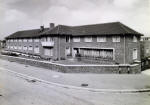 |
Housing provision for the elderly population had historically been met by charitable means. Almshouses, mostly built during the nineteenth century, provided a resting home for the fortunate few who were offered accommodation, alternatively many older people ended up in workhouses or institutional accommodation. The issue of meeting the housing needs for the elderly population began to be considered seriously by local councils by the 1940s. It was believed that the duty of making housing provision for older people must be the responsibility of the council and purpose built elderly housing like those shown on the left should be included in the programme of building. In 1946 the number of pensioners in Britain was over 4,000,000 and it was admitted that only a fraction had access to suitable accommodation. Up until this time, most councils had concentrated on building family homes, largely in the new suburban estates. |
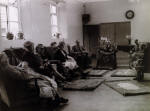 |
 |
From the 1970s councils built increasingly fewer homes, concentrating instead on repairs to their now aging housing stock. The introduction of the ‘Right to Buy’ under the Housing Act 1980 was a watershed event for councils all over the country. From the start local authorities have been able to sell off their houses, but until the introduction of the RTB they were not forced to do so. Up until this time mostly the production of new homes exceeded the numbers sold, however following the passing of this policy, the period of growth halted and began a decline. Largely it led to many of the better quality council properties being purchased by tenants who qualified for the right to buy. The number of houses managed by London’s councils had shrunk from 840,000 in 1984 to just over 500,000 by the end of the century. Another impact of the right to buy was that the majority of dwellings that were sold were houses rather than flats. So the right to buy has reduced the supply of family houses and altered the balance of council housing stock in the country. |
 |
 |
Nationally 1 million houses were sold within 10 years. Spending restrictions were also introduced at the same time which that it was no longer possible to build new houses in large numbers. After fifty years of virtually uninterrupted growth, the numbers of council houses began to fall, and have continued to do so ever since. Discounts available to tenants under the Right to Buy of up to 60 per cent off the market price meant that good houses could be purchased for less than £10,000 in the early 1980s; they are now likely to be worth £150,000 or more. So for many people the right to buy has been a great benefit. |
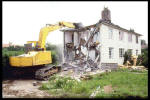 |
 |
But for some purchasers and the Council, however, it caused severe problems. In 1981 it began to be revealed that there were major structural problems with some types of concrete houses (referred to as PRCs). Several types of the PRCs had problems caused with corrosion of the metal reinforcing bars in their concrete structure. This made them unmortgageable and therefore people who had bought these sorts of houses found that they were effectively impossible to resell. There are approximately 140,000 cases nationally. The Housing Defects Act, 1984, gave buyers of certain types of PRC houses the right to insist that the Council carry out the work necessary to repair or rebuild their houses. |
 |
 |
Local councils are now faced with a stock of older houses and they will continue to need a large programme of investment to keep them up to date. With changing tastes and prefences, accommodation that is no longer suitable or acceptable to tenants will need to be replaced. Many councils were saddled with housing debt and this combined with restrictions on investment has effectively brought a halt to new building by councils themselves. Council housing has increasing become a residual housing tenure, providing home for only the very poor, homeless and those with no alternative form of accommodation. This process of residualisation can be traced back through government policy - to the 1930s - the mid 1950s and confirmed by Conservative governments since 1979. Generally there has been a retreat from council house provision and a curb on housing expenditure along side measures to encourage the private sector. |
 |
 |
Improvement and regeneration have become priorities. Housing providers now have an obligation to bring all their homes up to the set ‘decency’ standard by 2010 and to ensure that no-one is disadvantaged by where they live. New funds have been available from central government for a succession of regeneration programmes, they were however often conditional on transferring the management of their housing stock to housing associations or RSLs. This option has been widely taken since the 1990s as the nations stock aged and maintenance costs rose The process is known as stock transfer and was introduced in the Housing and Planning Act 1986. Already a quarter of local housing authorities in the country are no longer landlords – they do not have specific responsibilities such as rent collection or repairs and maintenance however they remain in law the local housing authority with the responsibility of providing a strategic and community leadership within their locality. |
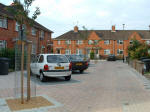 |
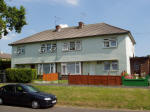 |
The make up and demographic of council estates have changed in tenure and appearance since their beginnings. The impact of the right to buy has turned the former council estates into mixed tenure areas, where tenants and homeowners live side by side. Some cities display a polarisation between the more successful council estates peppered with Right to Buys and less popular estates where a greater sense social deprivation is apparent. |
 |
|
Today the social rented sector (a combination of council and RSL managed housing) makes up 20% of the housing stock. The importance of provision of social rented housing in meeting housing shortage has diminished and government has placed more importance on its use as a safety net for vulnerable households. The country still has an overall strategic goal of providing decent affordable homes for its people and is proud to be one of the few countries in the world where specified groups, such as the homeless, have a legally enforceable right to housing. |
|
©2008 University of the West of England, Bristol
except where acknowledged